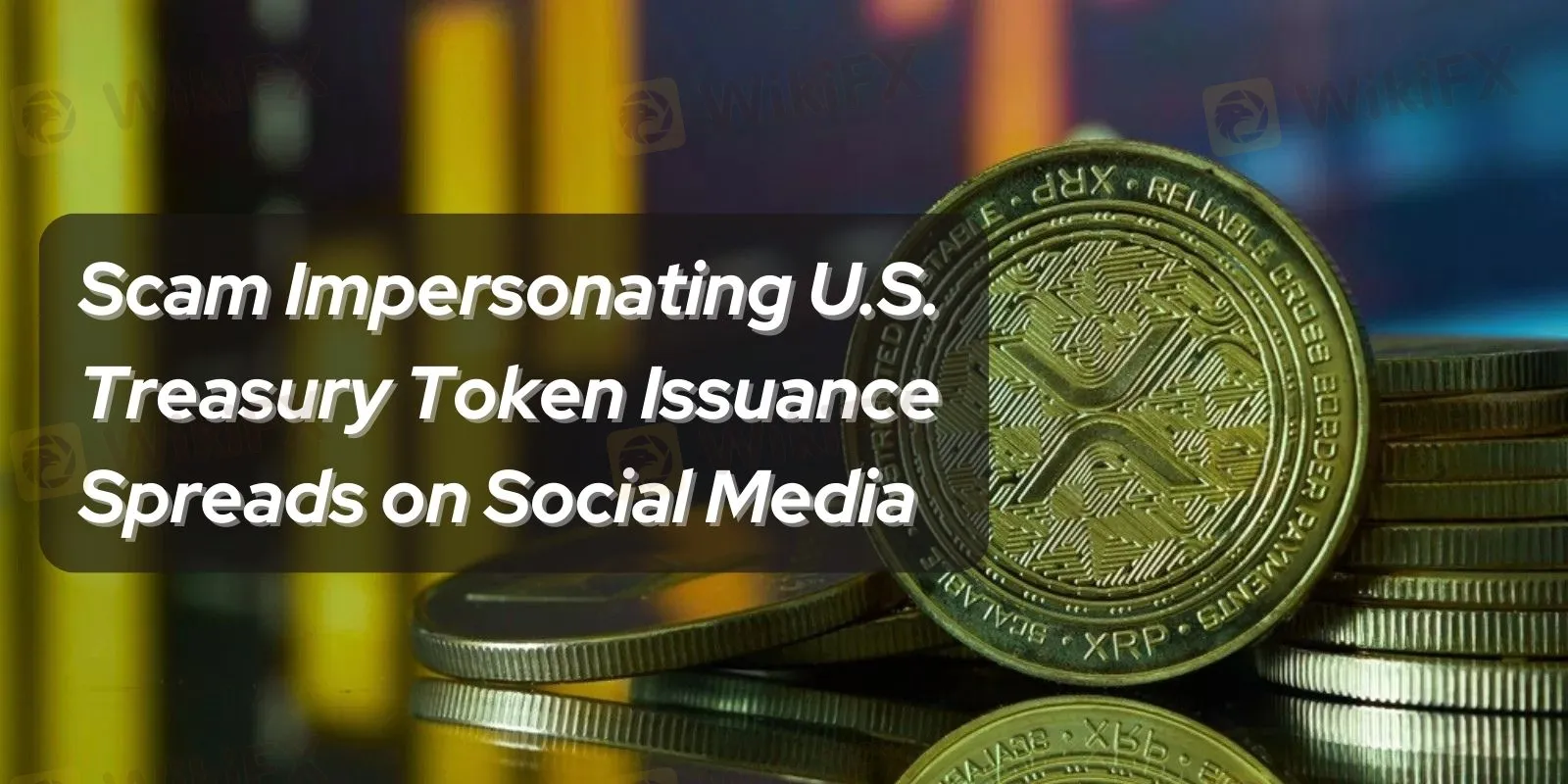简体中文
繁體中文
English
Pусский
日本語
ภาษาไทย
Tiếng Việt
Bahasa Indonesia
Español
हिन्दी
Filippiiniläinen
Français
Deutsch
Português
Türkçe
한국어
العربية
Scam Impersonating U.S. Treasury Token Issuance Spreads on Social Media
Abstract:A social media scam falsely claimed the US Treasury created an XRP wallet, exploiting misinformation and targeting crypto newcomers with fabricated credibility.

In January 2025, a new social media scam surfaced, falsely claiming that the US Treasury had created an XRP wallet. Despite obvious red flags, this hoax spread rapidly across platforms like X (formerly Twitter), fueled by major accounts amplifying the misinformation. The incident underscores the vulnerability of the crypto space to scams, particularly targeting inexperienced investors.
Unpacking the XRP Wallet Scam
The scam originated from accounts allegedly based in the Philippines, where individuals impersonated the US Treasury and claimed the creation of an XRP wallet. The wallet supposedly interacted with major financial institutions like Bank of America and JPMorgan, lending an air of credibility to the hoax. However, on-chain analysis quickly revealed that the wallet was neither affiliated with the US Treasury nor based in the United States.
The timing of the scam played into existing narratives. Since former President Trump‘s endorsement of a US Bitcoin Reserve and several states pursuing their own Bitcoin reserves, some speculated that the Treasury might also explore cryptocurrency investments. Coupled with XRP’s recent price surge, these factors made the hoax appear plausible to some in the community.
Targeting Vulnerable Investors
This scam highlighted a critical issue: the susceptibility of crypto newcomers to misinformation. Reports suggest that nearly half of TRUMP meme coin holders are first-time crypto investors. Without prior experience or knowledge, many fall prey to scams that appear credible due to verified accounts or trending narratives.
Zach Rynes, a Chainlink Community Liaison, pointed out that trained eyes could easily identify the red flags. However, he noted the difficulty of combating such hoaxes in a decentralized, fast-paced environment. The scam underscores the need for robust education and vigilance within the crypto community.
Recognizing the Nature of Scams
The XRP wallet scam underscores the importance of understanding the common characteristics of crypto scams. These schemes often use fabricated connections to reputable institutions, like the US Treasury in this case, to mislead and exploit trust. Identifying such red flags and cross-checking information with official sources are crucial steps in avoiding deception.
Disclaimer:
The views in this article only represent the author's personal views, and do not constitute investment advice on this platform. This platform does not guarantee the accuracy, completeness and timeliness of the information in the article, and will not be liable for any loss caused by the use of or reliance on the information in the article.
Read more

TriumphFX Rebrands to Continue Global Fraud: Over RM80 Million Lost
The notorious forex investment company TriumphFX, previously exposed for running a global scam operation for over a decade, is now being accused of rebranding itself to continue defrauding unsuspecting investors. Despite being unregulated and based offshore in Seychelles, TriumphFX has actively targeted Malaysian investors, luring them with false promises and eventually converting funds into cryptocurrency, making recovery nearly impossible.

TriumphFX Faces 29 Exposure Reviews on WikiFX
TriumphFX faces scrutiny with 29 exposure reviews on WikiFX, revealing regulatory warnings from ID BAPPEBTI, VU VFSC, SG MAS, and MY SCM, plus user complaints about withdrawal issues and fraud concerns.

What WikiFX Found When It Looked Into Exclusive Markets
In the fast-growing world of online trading, security and regulation are essential. One company now raising questions in this space is Exclusive Markets, a broker claiming to be regulated, but scrutiny of its licence and operations suggests a more complex picture.

TriumphFX Review 2025: A Safe Bet or a Risky Trap?
Is TriumphFX a trustworthy broker or a scam in 2025? This review explores its regulation, withdrawal issues, and more to help you decide if it's a safe bet or a risky trap.
WikiFX Broker
Latest News
ASIC Urges Financial Licensees to Fix Register Errors Before 2026 Deadline
eToro Review 2025: Top Trading Opportunities or Hidden Risks?
How much money will you earn by investing in Vantage Broker?
IronFX vs Exness Review 2025: Comprehensive Broker Comparison
Fraudsters Are Targeting Interactive Brokers' Users with Lookalike Emails
Everything you need to know about ADSS
SkyLine Guide 2025 Malaysia: 100 Esteemed Judges Successfully Assembled
Vantage Markets Review 2025: Trusted Forex and CFD Trading Since 2009
Top Tips to Choose the Best Forex Broker in 2025
SEBI Notifies New F&O Rules for Investors - New Derivative Trading Limits & More Amendments
Currency Calculator


